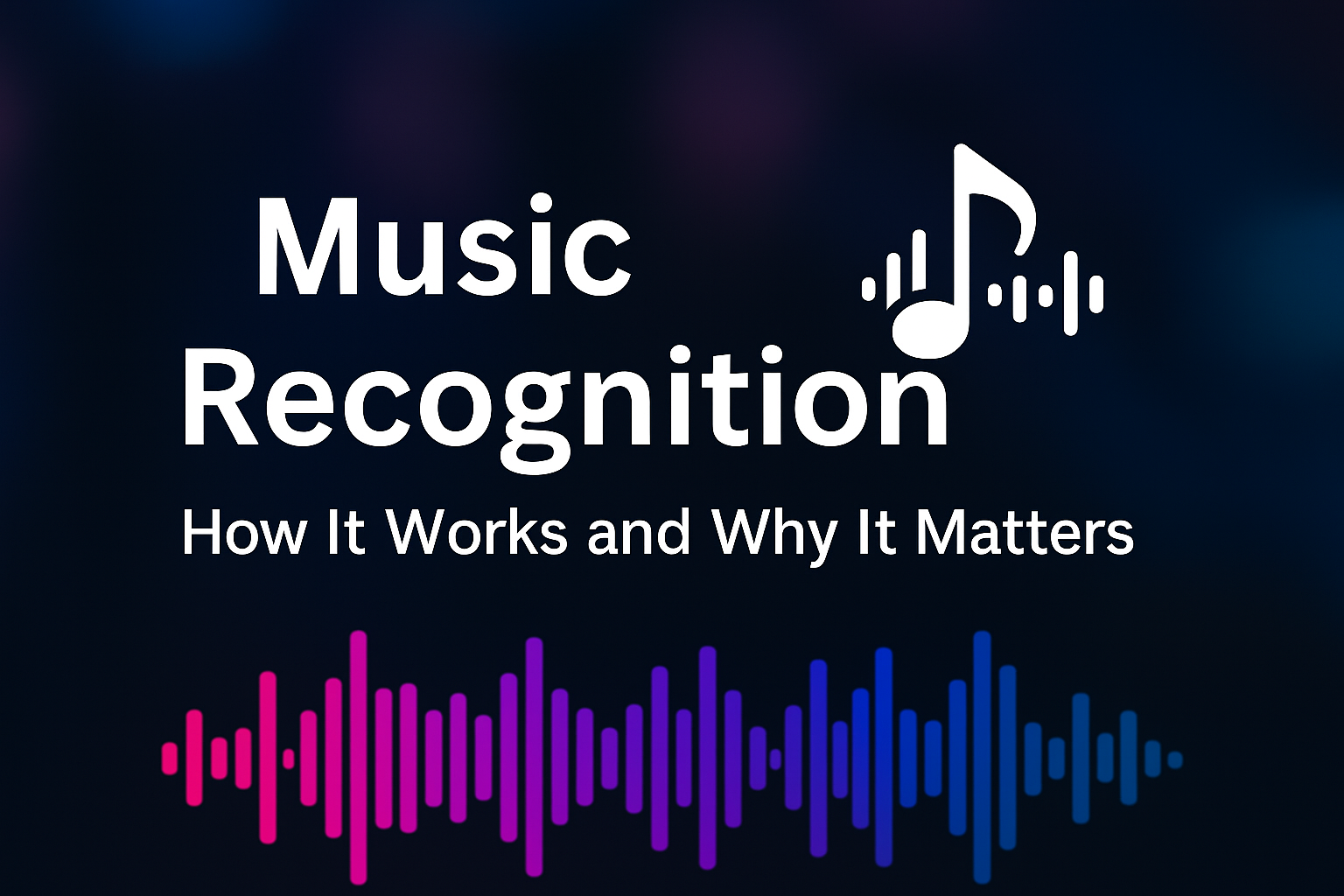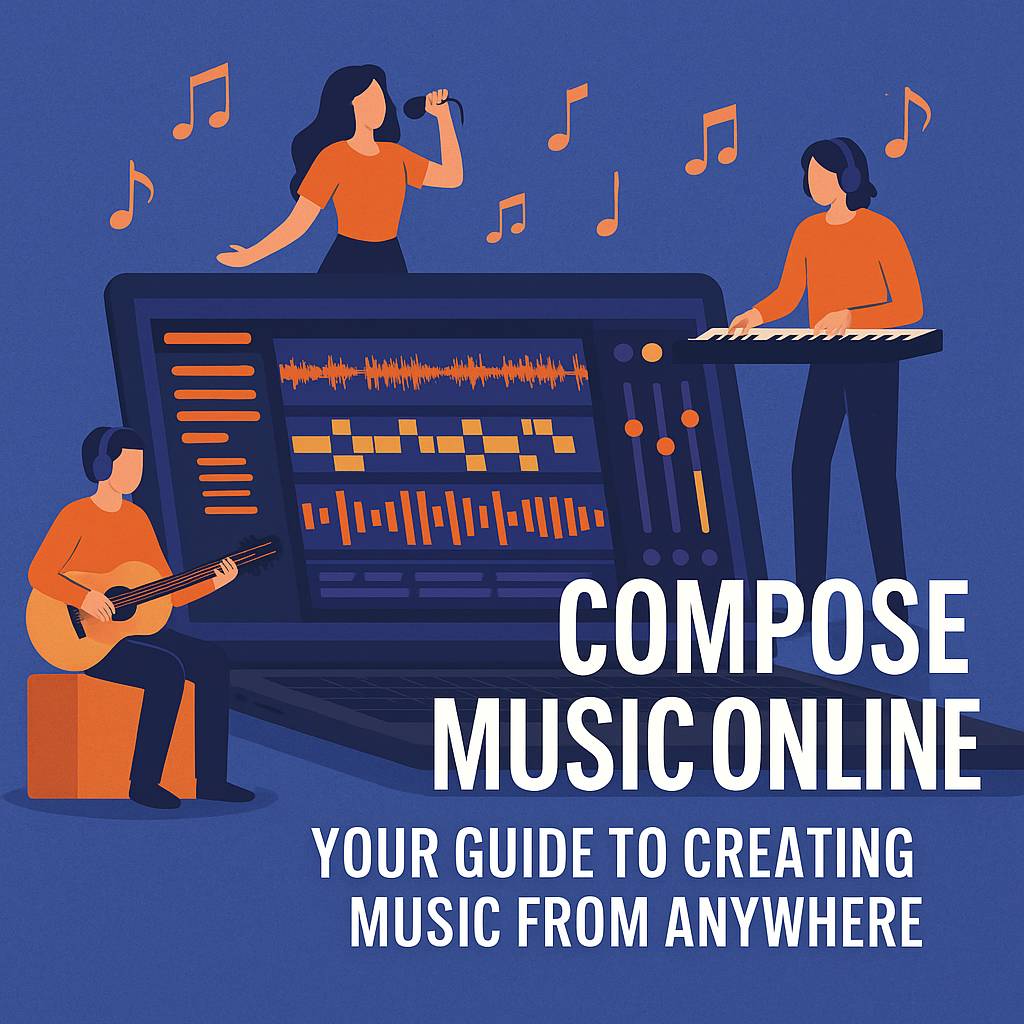Music Recognition: How It Works and Why It’s Revolutionizing the Music Industry
Imagine this: you’re in a coffee shop, and a catchy tune starts playing. You love it—but you’ve never heard it before. You grab your phone, open an app, and within seconds, you know the song’s title, the artist, and even where to stream it. That’s the power of music recognition.
But how does music recognition actually work? What’s happening behind the scenes when apps like Shazam, SoundHound, or Musixmatch magically identify a track in seconds? And why is music recognition more important than ever in today’s digital-first music landscape?
Let’s explore the technology, its benefits, its challenges, and how platforms like Muibas.com can fit into this changing ecosystem to help musicians gain more traction.
🎧 What Is Music Recognition?
Music recognition is a powerful technology that identifies a piece of music by analyzing its unique acoustic fingerprint. When a user plays a snippet of a song into a music recognition app, the app captures a short sample and compares it to a massive, indexed database of songs. If a match is found, the app delivers a comprehensive profile of the song: title, artist, album, release date, lyrics, and streaming links.
This technology bridges the gap between listeners and songs, making music discovery seamless. It’s also a game-changer for musicians, producers, labels, marketers, content creators, and tech developers.
🔍 How Music Recognition Technology Works
The magic of music recognition lies in audio fingerprinting—a digital method of identifying music tracks by their unique audio characteristics. Here’s a step-by-step breakdown:
- Audio Sampling: The app records a short portion (often just a few seconds) of the song.
- Fingerprint Extraction: It analyzes elements like frequency, tempo, amplitude, and unique beat patterns.
- Fingerprint Matching: The fingerprint is then compared with a database of pre-indexed audio fingerprints.
- Identification: If there’s a match, the system retrieves all associated metadata.
Popular services like Shazam use spectrogram fingerprints, while SoundHound allows users to hum or sing melodies—a testament to the technology’s advancement.
🌎 Why Music Recognition Matters in the Music Industry
Music recognition isn’t just about finding the name of a song—it’s about enabling an entirely new layer of music interaction and monetization.
1. Music Discovery Becomes Effortless
Apps help fans find music they like but can’t identify. The virality of tracks often begins with being Shazamed in clubs, cafés, TikTok videos, or movies.
2. Empowers Independent Artists
Emerging musicians can gain visibility when their tracks are added to recognition databases. Recognition requests can lead to spikes in streaming and exposure.
3. Monetization Through Data & Licensing
Recognition data fuels royalty collection by telling rights organizations (like ASCAP or BMI) when and where a song was played—especially in public venues.
4. Content Integrity on Platforms Like YouTube
Music recognition systems like YouTube’s Content ID help copyright owners track and monetize unauthorized uses of their work.
5. Audience Analytics and Strategy
Services that track recognition metrics can help artists and marketers understand audience engagement, regions of popularity, and ideal release strategies.
🚀 How Muibas.com Amplifies Music Recognition and Success
While Muibas.com doesn’t serve as a recognition platform, it is an essential part of the music creation and preparation pipeline. Think of it as the workshop where great music is born, refined, and made ready for the world—and for recognition.
Here’s how Muibas supports your music recognition journey:
- Structured Collaboration: No more scattered messages or lost files. Muibas helps you collaborate in a professional, organized way—essential for producing music that’s polished and distribution-ready.
- iBands Feature: Create virtual bands with musicians worldwide and produce songs in a collaborative environment, regardless of genre or skill level.
- Multiple Revisions: Upload several versions of a track, receive feedback, and finalize the best one for public release and recognition.
- Metadata & File Management: Export files with embedded metadata, crucial for distribution and accurate recognition.
- Cloud Storage and Chat: Easily share files and communicate with your team across time zones, all in one place.
Muibas equips you with the tools to create music that deserves to be recognized—and is ready to be discovered.
⚙️ Essential Music Recognition Tools to Know
Here are some of the most trusted tools for music recognition today:
| Tool | Features | Ideal For |
|---|---|---|
| Shazam | Recognizes tracks in seconds; provides streaming links | General listeners and fans |
| SoundHound | Voice and humming recognition; lyrics search | Singers, creators, general users |
| Musixmatch | Displays synced lyrics; integrates with Spotify and Apple Music | Lyricists, vocalists |
| AudD | Offers a recognition API for apps and developers | Developers, streaming apps |
| ACRCloud | Large-scale recognition and broadcast monitoring | Labels, broadcasters, enterprises |
These tools help your music become traceable and monetized when combined with proper distribution and platforms like Muibas.com.
🎛️ Tips for Musicians: Boost Your Recognition and Discoverability
Whether you’re a bedroom producer or a full band, getting your music recognized and remembered starts before it’s even released. Here are actionable tips:
✅ Before Releasing Your Track:
- Use Muibas to collaborate with musicians, get feedback, and finish polished, high-quality tracks.
- Ensure your track has all the necessary metadata (title, artist, genre, BPM, ISRC).
- Upload final versions with clean mastering—quality recordings are easier to recognize.
✅ When Distributing:
- Use services like DistroKid, TuneCore, or CD Baby to distribute your music globally.
- Choose platforms that integrate with Shazam, YouTube Content ID, and TikTok.
- Register your songs with performing rights organizations (ASCAP, BMI, PRS, etc.).
✅ After Distribution:
- Promote your track on social media and tell fans to Shazam or share it.
- Track performance through analytics tools (Shazam for Artists, YouTube Analytics, etc.).
- Leverage Muibas for future projects and refine your creative process.
📈 Real-World Scenario: Independent Artist Success with Music Recognition & Muibas
Let’s take an example: imagine you’re an independent singer-songwriter named Maya. You collaborate with a guitarist in Spain, a drummer in Brazil, and a producer in Germany—all through Muibas. You complete your song using structured slots, iterate on feedback, and finalize the best take.
Then, you distribute your song through a service that adds it to Shazam and Spotify databases. A popular TikTok creator uses your song. Thousands of users hear it and Shazam it. Suddenly, you have:
- Thousands of Shazam hits
- Placement on Spotify playlists
- Streams increasing daily
- Recognition by local radio stations
It all started with the right collaboration and a professional approach on Muibas.
💬 Final Thoughts: Recognition Begins with Preparation
Music recognition is reshaping how we listen to, discover, and monetize music. But the real power comes from creating something worth recognizing. Platforms like Muibas.com make that process accessible, structured, and collaborative.
If you’re serious about growing your audience, protecting your rights, and gaining real traction in today’s music world, it starts with creating high-quality, collaboration-powered music that’s easy to distribute, share, and recognize.
Start your journey today with Muibas—and create music that gets heard, recognized, and remembered.

